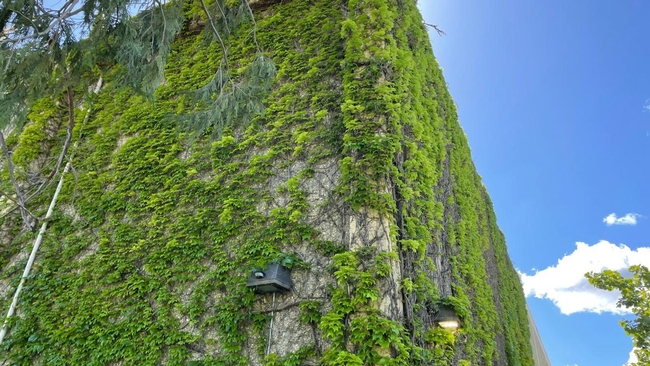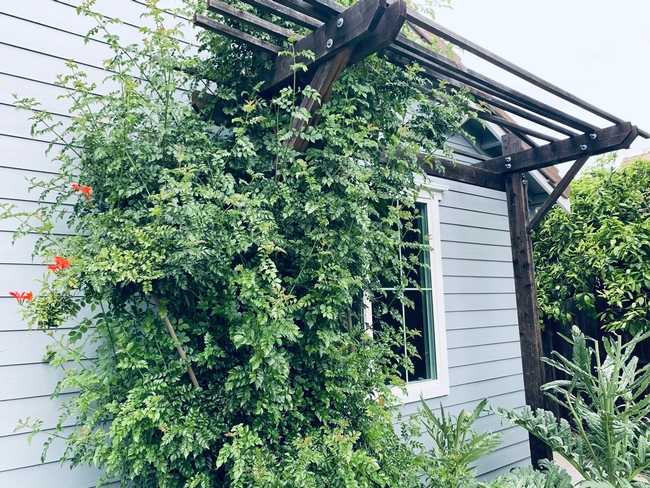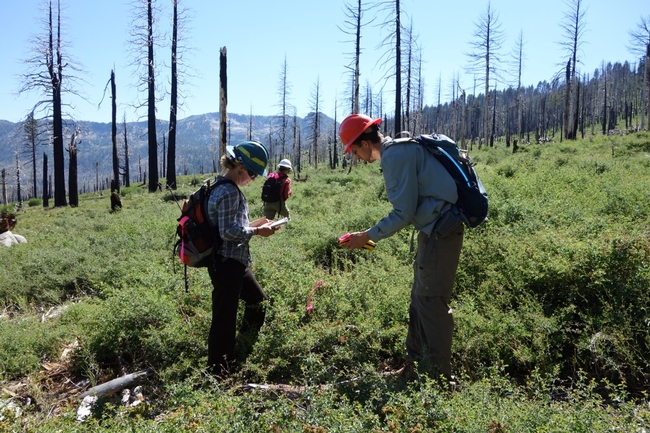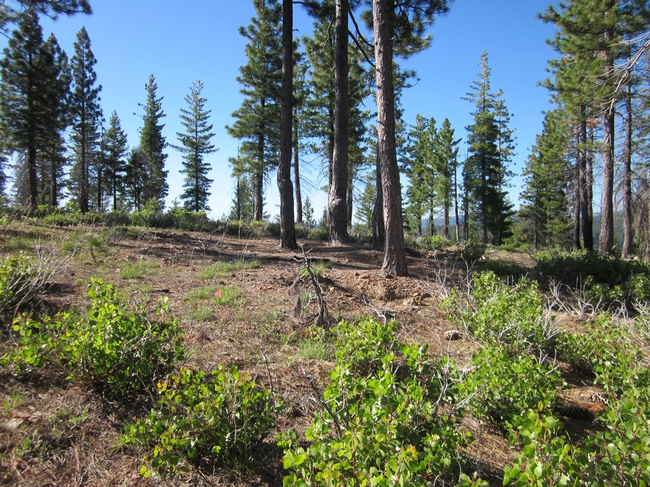Posts Tagged: UC Davis Plant Sciences
Can vines speed urban cooling?
Study explores cooling benefits of fast-growing vines as trees take their time
Perhaps trees aren't the only green solution when it comes to cooling urban spaces and reducing energy costs. Honeysuckle, Virginia creeper, pink trumpet and other vines could be a fast-growing substitute in climate-smart cities of the future.
Researchers from UC Davis are leading a nearly $880,000 federal grant to study how vines may provide cooling and shade in Western states in less time than it takes a tree to grow tall.
“Vines can quickly shade buildings and reduce energy consumption while trees slowly grow to maturity,” said Alessandro Ossola, an assistant professor of plant sciences who is a principal investigator for the project. “We believe vines can be an effective and cheap measure to help cities accelerating climate change adaptation.”
The grant from the U.S. Department of Agriculture's Agricultural Marketing Service will fund work to plant and monitor at least 10 types of vines on trellises in five locations in different climate zones over three years. California Department of Food and Agriculture is administering the grant.
Using less water
Water conservation will be vital as populations rise, climate extremes become more prevalent and the demand for agricultural and drinking water increases. The goal of this research is to identify vines that can help save energy by providing cooling and reduce the need for irrigated water.
“In addition to rapid growth rates, vines can be easily integrated with structures to maximize potential cooling effects,” said Loren Oki, a Cooperative Extension specialist with Department of Plant Sciences, who is the project lead. “But we need to understand the relationships between low water-use plants and their ability to reduce thermal loads on buildings.”
The vines will be planted, supported by a trellis and watered regularly during the first growing season to establish deep roots and healthy shoots. Over the next two years, the vines will experience low, moderate and high water allocations.
The vines will be rated on aesthetics, foliage quality, floral quantity, pest and disease resistance, appearance and other factors. Thermal images of trellis coverage and other environmental measurements will also be taken to assess shading and cooling potential, according to grant documents.
Many vines can be grown along cables and wire nets that are actually detached from walls to avoid direct contact and still provide shade, Ossola said.
“We want to understand which vine characteristics relate to fast growth, reduced water use and increased aesthetic appeal,” he added.
Outreach and education
The findings will enable recommendations to be developed for regions, planners, the landscape industry and the public. It could lead to plants being designated as “water-wise,” “low-water use,” “energy-saving” or “cooling.”
Extensive engagement and outreach will also publicize the information.
“Climate change is a great opportunity for the horticultural industry to innovate and promote climate-ready plant productions,” Ossola said.
USDA funding supports research across state lines to find innovative solutions to regional and national problems, USDA Under Secretary for Marketing and Regulatory Programs Jenny Lester Moffitt said in a news release announcing this and other grants.
“This year's funded projects will address a range of those challenges, from energy and water saving in vine plants, finding cost-effective solutions for heat tolerance and drought, to addressing food safety risks for produce,” Moffitt said.
Scientists from the University of Arizona, University of Washington, Utah State University and the South Coast Research and Extension Center at UC Agricultural and Natural Resources are contributing to the research and will be overseeing vine sites in their states.
This article is reprinted from the UC Davis College of Agricultural and Environmental (CA&ES) website, where it is titled "Could Vines Be the Answers to Speeding Urban Cooling, Water Reduction in the West?"
Connecting wildfires to climate change and drought
Longer summers, less moisture and warmer climates are predicted for California's Sierra Nevada mountains. These changing patterns bring frequent droughts and extended wildfire seasons — as seen from the current extreme drought. The question no longer is whether wildfires will be more common or more intense — they already are — but how forest managers want these fires to burn.
Jens Stevens, a postdoctoral researcher in disturbance ecology at the University of California, Davis, has tracked how forests thinned for wildfire react to high-intensity burns. The answers he found touch on growing concerns over how the state can protect its forests.
Under the context of climate change, Stevens studies how understory plants recover from wildfires, measuring the effects fuel treatments — such as the thinning of small trees — have on the way these forests burn.
Historically Sierra forests had gaps and openings, which prevented the spread of fires. More than a century ago land management agencies began a campaign of extinguishing all wildfires. Today's forest floors are blanketed with litter — fallen branches, leaves and shrubs — and many of the fire-tolerant pines have been replaced by firs, which handle shade well but act as fuel sources.
Stevens' research showed fuel treatments encourage resilience to wildfires, giving forests a greater ability to withstand a burn. Under really hot, dry summer conditions this makes a powerful difference.
“If you get warmer temperatures you're going to dry out the fuels,” says Stevens. “If we want to retain forest-dominated landscapes, we don't have the choice of doing nothing, because eventually these stands are going to burn."
To preserve forests, Stevens looked to native plant diversity under each management strategy. After a high severity fire, the tree canopy is non-existent. This new high-light environment favors other species, such as shrubs and flowering plants, which crowd out young trees.
In treating a stand before a fire, land managers are already encouraging plant diversity and when the stand burns, diversity increases even more, Stevens discovered.
While the treatments do protect the forest and encourage plant diversity, they are expensive and lead to uncertainty over how sensitive wildlife species are affected. Yet these areas will burn eventually, Stevens argues. The choice is either a more open forest or no forest at all.
He points out research by UC Davis ecologist Malcolm North, which shows the current pace of treatments can't keep up with the extent of Sierra forests that have been fire suppressed. The US Forest Service can treat up to 40 percent of a forest before managers must start over for follow-up treatments. The other 60 percent doesn't get touched.
“So the only real way to address that is to let the fire do the work for you,” says Stevens.
The proposal North and his colleagues arrived at relies on “firesheds.” These fire-prone areas would have boundaries that allow officials to efficiently manage the fires. If a burn begins after a treatment, they don't put it out. Allowing the fire to burn fuels they would otherwise be removing frees up resources to treat other areas.
“So if it's going to burn,” says Stevens, “you need to figure out ways the fire's going to give you your desired outcome.”
Watch Stevens explain more in his seminar.
This post was adapted from a longer piece by the UC Davis Department of Plant Sciences.




